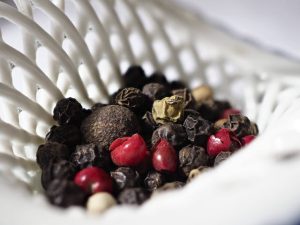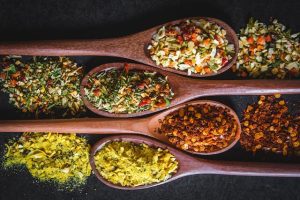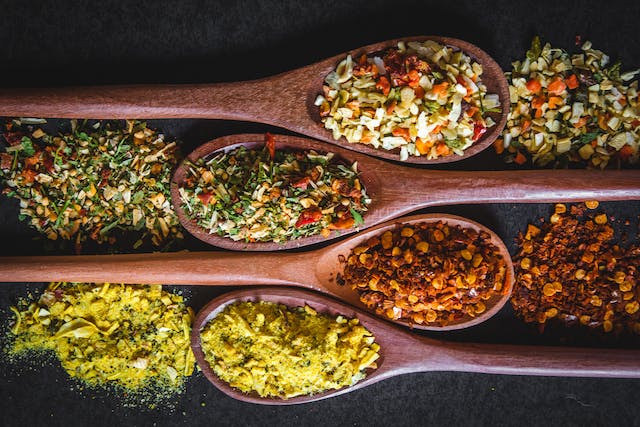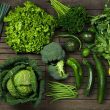Introduction:
Meet our guide, Samin Nosrat, a renowned culinary expert and author of “Salt, Fat, Acid, Heat.” Samin’s vast experience and expertise in the culinary world make her the perfect companion on a journey through the world of peppercorns. we’ll explore the versatile peppercorn, delving into its history, taste, and the traditions that surround it. Whether you’re a seasoned home cook or just starting to embrace the culinary arts, you’re in for a treat.
Peppercorn Primer
Peppercorns are an indispensable ingredient in every kitchen, but how well do you really know them? In this section, we’ll start with the basics. What are peppercorns, Peppercorns, the tiny, aromatic powerhouses that they are, come from the flowering vine Piper nigrum. These small wonders are the fruits of the pepper plant and are typically harvested when they are still green, then dried to produce the familiar black, white, or green peppercorns we use in cooking. Their significance in the culinary world is unparalleled. They offer a delightful balance of pungency, spiciness, and aroma, making them a perfect addition to a wide range of dishes.

This balance is why they hold a hallowed place in the world of seasoning. Pepper has a long and illustrious history, dating back to ancient times. Samin Nosrat takes us on a historical journey, uncovering the spice’s fascinating past and its influence on world cuisine. The allure of peppercorn is timeless. Throughout history, it has been as valuable as gold and has played a pivotal role in shaping world events. In the ancient world, it was not only a seasoning but also a currency, with peppercorns being used to pay for debts and taxes.Its storied past includes being a driving force behind exploration and trade. The famous Silk Road, connecting Asia to Europe, was not just for silks but for spices, particularly peppercorn. It was sought after by traders and explorers alike, making it one of the most coveted commodities.
Varieties of Peppercorn
Black Peppercorns: These are the most common and recognizable variety. They are picked when still unripe and then dried, which gives them their wrinkled appearance. Black peppercorns offer a robust, sharp flavor with a kick of heat.
White Peppercorns: To make white pepper, the ripe red berries are soaked and the outer husk is removed. This process results in a milder, earthy flavor compared to black peppercorns. White pepper is often used in dishes where you want to maintain a light color, like white sauces and mashed potatoes.
Green Peppercorns: These are unripe peppercorns that are freeze-dried or preserved in brine, preserving their fresh, mildly spicy flavor. Green peppercorns are often used in creamy sauces, marinades, and pickles.
Pink Peppercorns: Although not true peppercorns, pink peppercorns are actually the dried berries of the Brazilian pepper tree. They have a mild, sweet, and slightly fruity flavor with a hint of spiciness. They add a colorful and flavorful touch to your dishes.
Cooking with Peppercorns Learn how to make the most of peppercorns in your cooking. Samin shares cooking techniques and flavor pairings that will elevate your dishes to new heights.
Art of using peppercorns
- Grinding Techniques: Freshly ground peppercorns are a game-changer. Invest in a quality pepper grinder to release the spice’s full potential. Adjust the coarseness to suit your dish.
- Pairing Perfection: The choice of peppercorn can greatly impact your dish. Use black peppercorns for hearty dishes like steaks and stews, while white peppercorns are excellent in cream-based sauces. Green peppercorns shine in seafood dishes, and pink peppercorns add flair to salads and desserts.
- Balancing Act: Pepper’s spiciness can be balanced with other flavors. Combining it with salt, fat, and acidity can create a harmonious taste profile in your dishes, as Samin famously explores in her book.

Peppercorn Varieties
| Variety | Flavor Profile | Best Uses |
|---|---|---|
| Black Peppercorns | Robust, sharp, and spicy | Hearty dishes like steaks and stews |
| White Peppercorns | Milder and earthy | Cream-based sauces, mashed potatoes |
| Green Peppercorns | Fresh and mildly spicy | Seafood dishes, marinades, pickles |
| Pink Peppercorns | Mild, sweet, slightly fruity | Salads, desserts, and garnishes |
Conclusion:
As you journey through the world of peppercorns with Samin Nosrat, you’ll not only deepen your understanding of this versatile spice but also enhance your culinary skills. Whether you’re a lifestyle enthusiast or an experienced cook, the insights and techniques shared in this article will undoubtedly spice up your kitchen adventures. So, grab your pepper grinder and embark on a flavorful exploration that will leave your taste buds tingling with delight. Now that you’re well-versed in the world of peppercorns, it’s time to put your knowledge to use. Elevate your culinary creations, surprise your taste buds, and impress your guests with the magic of this versatile spice. As you explore the depths of peppercorns in your kitchen












